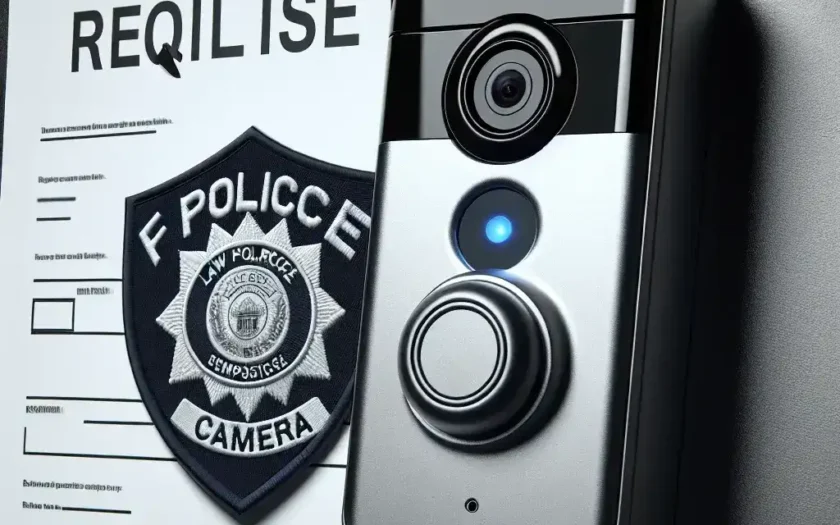Introduction
In an era where home security systems have become integral to safeguarding personal spaces, the announcement that Ring, the smart doorbell company owned by Amazon, has reinstated its law enforcement camera footage requests has stirred considerable debate. This article delves into the implications of this decision, examining its impact on privacy, community safety, and the evolving relationship between technology and law enforcement.
The Background of Ring’s Policy
Ring initially suspended its law enforcement camera footage requests after facing significant backlash from privacy advocates and community members. Concerns were raised regarding potential misuse of personal data and the erosion of civil liberties. With the reinstatement of these requests, it is crucial to explore what led to this decision and its potential consequences.
Historical Context
Ring was founded in 2012, aiming to enhance home security through smart technology. The company gained rapid popularity, largely due to its innovative products and the incorporation of video surveillance into everyday life. However, as Ring expanded its reach and collaborated with law enforcement agencies, it quickly became embroiled in controversies surrounding privacy and surveillance.
Initial Suspension of Requests
Following mounting concerns over privacy violations, Ring temporarily halted law enforcement requests for video footage in 2020. The primary focus was to reassess its policies and engage in a dialogue with stakeholders about the ethical implications of its technology. This move was seen as an acknowledgment of the growing apprehension regarding how surveillance technologies could be utilized.
The Reinstatement of Requests
Reasons Behind the Decision
The reinstatement of law enforcement requests for camera footage by Ring can be attributed to several factors:
- Community Safety: Ring argues that sharing footage with law enforcement can significantly aid in criminal investigations, enhance community safety, and help solve crimes more efficiently.
- Improved Transparency: The company has committed to more transparent practices, including clearer guidelines on how requests will be managed and how footage will be used.
- Pressure from Law Enforcement: Many law enforcement agencies have expressed their need for access to video footage as a valuable tool for public safety and crime prevention.
How the Process Works
Under the reinstated policy, law enforcement agencies can request access to video footage from Ring devices when investigating a specific incident. The process typically involves:
- Request Submission: Law enforcement agencies must submit a formal request, detailing the nature of the investigation and the specific footage required.
- Review Process: Ring reviews the request to ensure it meets their criteria and complies with legal standards.
- User Notification: When footage is shared, Ring aims to notify users, providing transparency about who accessed their data.
Pros and Cons of the Decision
Pros
- Enhanced Crime Prevention: Access to video footage can assist law enforcement in quickly identifying suspects and solving crimes.
- Improved Community Relations: By collaborating with local law enforcement, Ring may foster a sense of security among users, enhancing trust in their products.
- Real-Time Response: Law enforcement agencies can act more swiftly during emergencies, potentially saving lives and preventing further criminal activity.
Cons
- Privacy Concerns: Critics argue that increased access to surveillance footage could lead to abuse, with personal privacy being compromised.
- Chilling Effect: The fear of constant surveillance may deter individuals from engaging in normal activities, leading to a chilling effect on personal freedoms.
- Data Misuse Risks: There are concerns about how data might be stored and used beyond the original intent of law enforcement requests.
Future Predictions
As technology continues to evolve, the intersection of surveillance, privacy, and law enforcement will remain a contentious issue. The hope is that Ring can strike a balance between aiding law enforcement and protecting users’ privacy rights. Future developments may include:
- Stricter Regulations: Governments may impose stricter regulations on how companies like Ring handle user data and cooperate with law enforcement.
- Increased User Control: Users may demand more control over their footage, including clearer options for opting in or out of sharing their data with law enforcement.
- Technological Innovations: Advances in technology may lead to more effective privacy-preserving measures while still assisting law enforcement needs.
Conclusion
Ring’s decision to reinstate law enforcement camera footage requests reflects a complex balance between community safety and individual privacy rights. As this policy unfolds, it is vital for both Ring and law enforcement agencies to maintain transparency and uphold the trust of their users. The ongoing conversation about surveillance technology will undoubtedly shape the future of home security, law enforcement, and privacy in our increasingly interconnected world.

